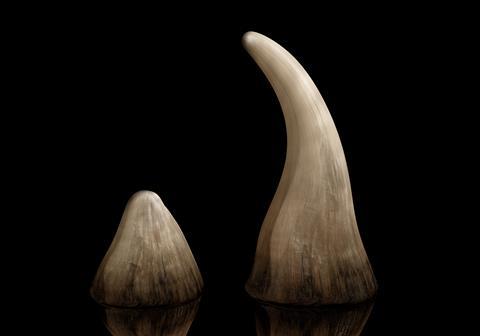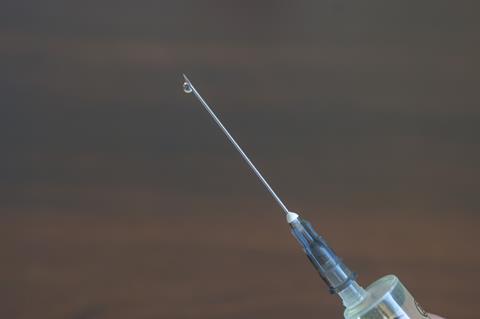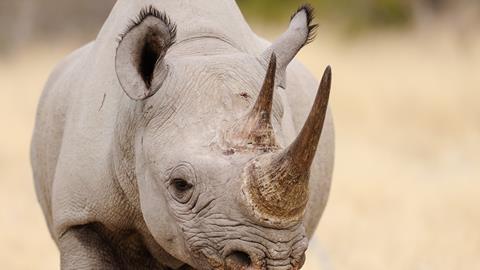Ben Valsler
Ectoparasiticides are compounds used deter or kill animal parasites like tics and fleas. Martha Henriques asks how conservationists at a rhino reserve in South Africa are making use of ectoparasiticides to keep not fleas, but poachers away from their rhino population.
Martha Henriques
Rhino horns are a big black-market business in South Africa. A single horn can fetch tens of thousands of pounds per kilo. The biggest markets for rhino horn are Vietnam, China, and the Yemen, where they’re used in traditional medicines.

Efforts to keep poachers away from rhinos come mainly from the tourism industry, who cater for people coming to South Africa to see the big five: the lion, elephant, leopard, buffalo, and rhino. In some places this is becoming the big four-and-a-half. Measures to protect rhinos from poaching can stretch to disposing of the horn by sawing it off a little above the base in a way that won’t kill the animal.
Chopping off a rhino’s horn is an extreme option and one that deflates the tourist industry as well as the black-market trade in rhino horn. Lorinda Hern, at the Rhino Rescue Project near Johannesburg in South Africa, told me about a method she started to use five years ago after her first experience of losing a rhino to poachers in 2010. She said they were looking for an extra deterrent not just to make it harder for poachers to get to the rhinos, but instead to devalue the horn so poachers would be less interested in the first place.
Hern knew that ectoparasiticides, commonly used in flea treatments, can make people a bit sick if they eat them. Ectoparasiticides are a diverse group of compounds, including benzyl benzoate and permethrin, and defined by their ability to kill external parasites. Any effect on humans from ingesting them isn’t likely to be strong or to cause lasting harm. But the important thing, Hern says, is that they’re not exactly something consumers look for as an ingredient in a traditional medicine.
Hern identified two things that might reduce black-market demand for rhino horn and stem the flow of poaching: making it socially unacceptable to take traditional medicines using ingredients from animals such as rhinos was one, and another was a health scare about using these products.

She realised that injecting ectoparasiticides into a rhino horn – and making sure it was widely known what she and her team were doing – might be enough to start a health scare about consuming rhino horn that could save the animals from poachers.
The process of injecting or contaminating the horn with ectoparasiticides costs Hern’s team around £300 for each rhino. Along with the ectoparasiticides, the team injects a pink dye to make it clear to anyone further down the supply chain that the horn has been contaminated, could make consumers sick, and that it is effectively worthless.
The procedure starts by tracking down and tranquilising a rhino. When the animal is grounded the team can get to work. First they drill a hole in the rhino horn and then slowly pump in the mixture of dye and ectoparasiticides to suffuse the whole horn from the inside. They then plug up the hole and wrap the horn in a bandage, which the rhino will eventually rub off, and watch as the animal recovers from the tranquiliser.
It doesn’t sound like a pleasant procedure for a wild animal to go through, but as Hern says, it’s better than a poacher working at night and shooting with bullets rather than tranquilisers.
Since she started using the horn devaluation method with ectoparasiticides in 2010, Hern has found the power of the health scare to be one of the most valuable tools conservationists have to fight poachers. Hern says that on her reserve there hasn’t been a single poaching incident since the programme began in 2010. This is significant; after a poacher has been successful at one location, the odds are they’ll come back again once they know the terrain and the security systems in place. The horn devaluation project seems to have prevented a poaching problem taking hold.
Hern’s team have been rolling out their project across the region. Towards the end of 2015 Hern’s team of four conservationists had treated the horns of more than 300 rhinos. At two reserves in South Africa, the Ndumo Game Reserve and the Tembe Elephant Park, there had been 18 poaching incidents in the three months before Hern’s team arrived. After the contamination, there were no poaching incidents in the three months after.
Hern is focused on getting as many rhino horns contaminated as possible, and a lot of the project’s success lies in publicising what they are doing. With a team of four people working to protect as many rhinos as possible, there isn’t much time left over for writing up and publishing scientific literature on their work. But Hern is interested in working with universities, she tells me, perhaps taking on a postdoctoral student in the future to work alongside the team.
But for now, Hern’s work is very much on the ground, making sure that the local communities near the reserves and the end-users of rhino horn know that her team is contaminating rhino horns with ectoparasiticides.
Ben Valsler
That was Martha Henriques explaining how compounds developed to keep parasites at bay can help to conserve one of the planet’s rarest species. Next week, Michael Freemantle examines an accidental discovery.
Michael Freemantle
The Canadian inventor Thomas Willson discovered the compound serendipitously in 1892. At the time, Willson was attempting to produce aluminium by smelting ores containing alumina, that is aluminium oxide. He mixed the ores with carbon and heated the mixtures to high temperatures in an electric arc furnace. The purpose of the carbon was to remove the oxygen from the ores, a process known as reduction. But he was not successful.
Ben Valsler
His experiments, however, had some unexpected successes, as we’ll find out in next week’s Chemistry in its Element. Meanwhile, you can catch up with our monthly magazine podcast and hear our reviews of the best pop-science books in the Chemistry World book club podcast. Thanks for listening, I’m Ben Valsler.













No comments yet